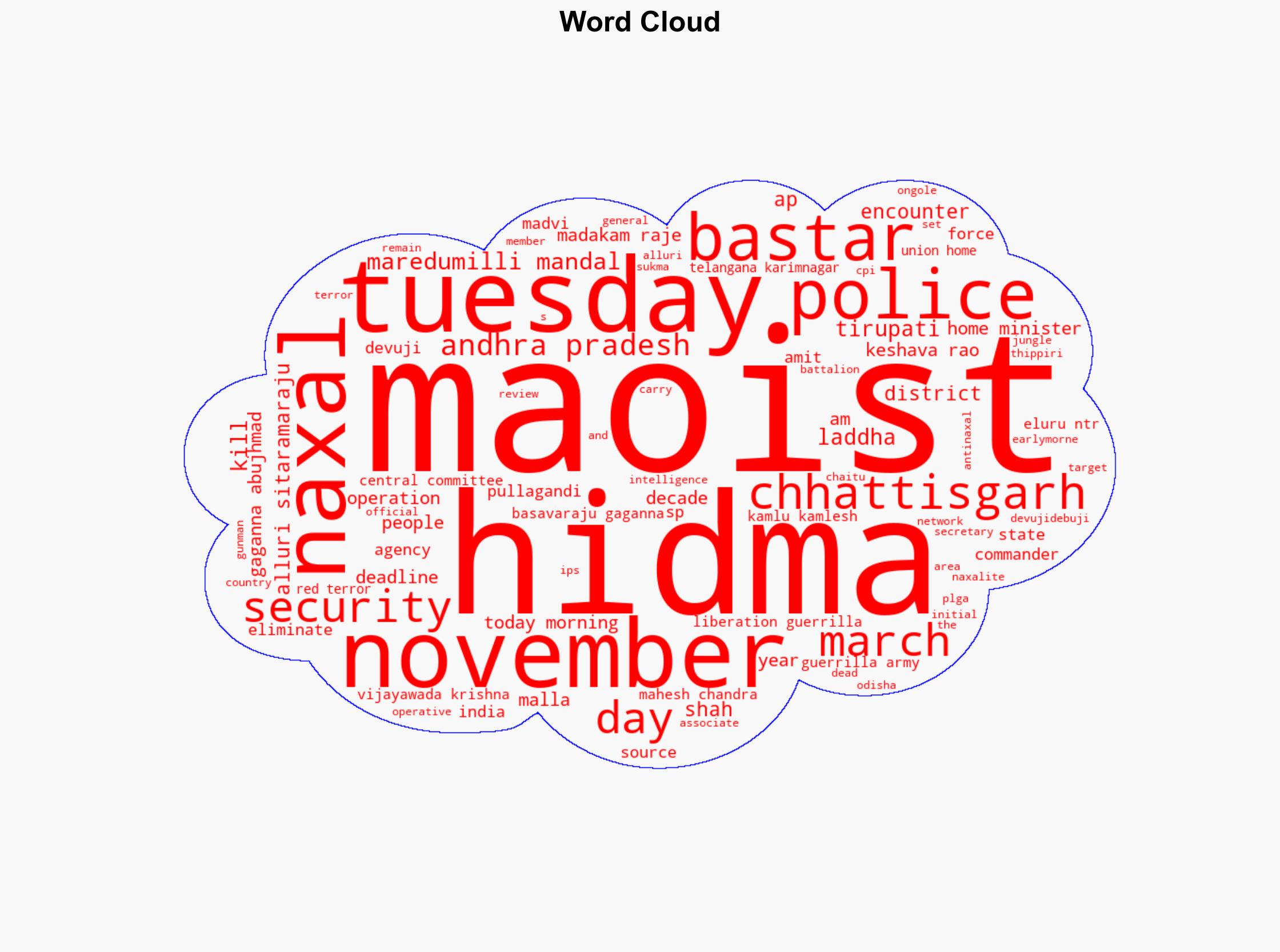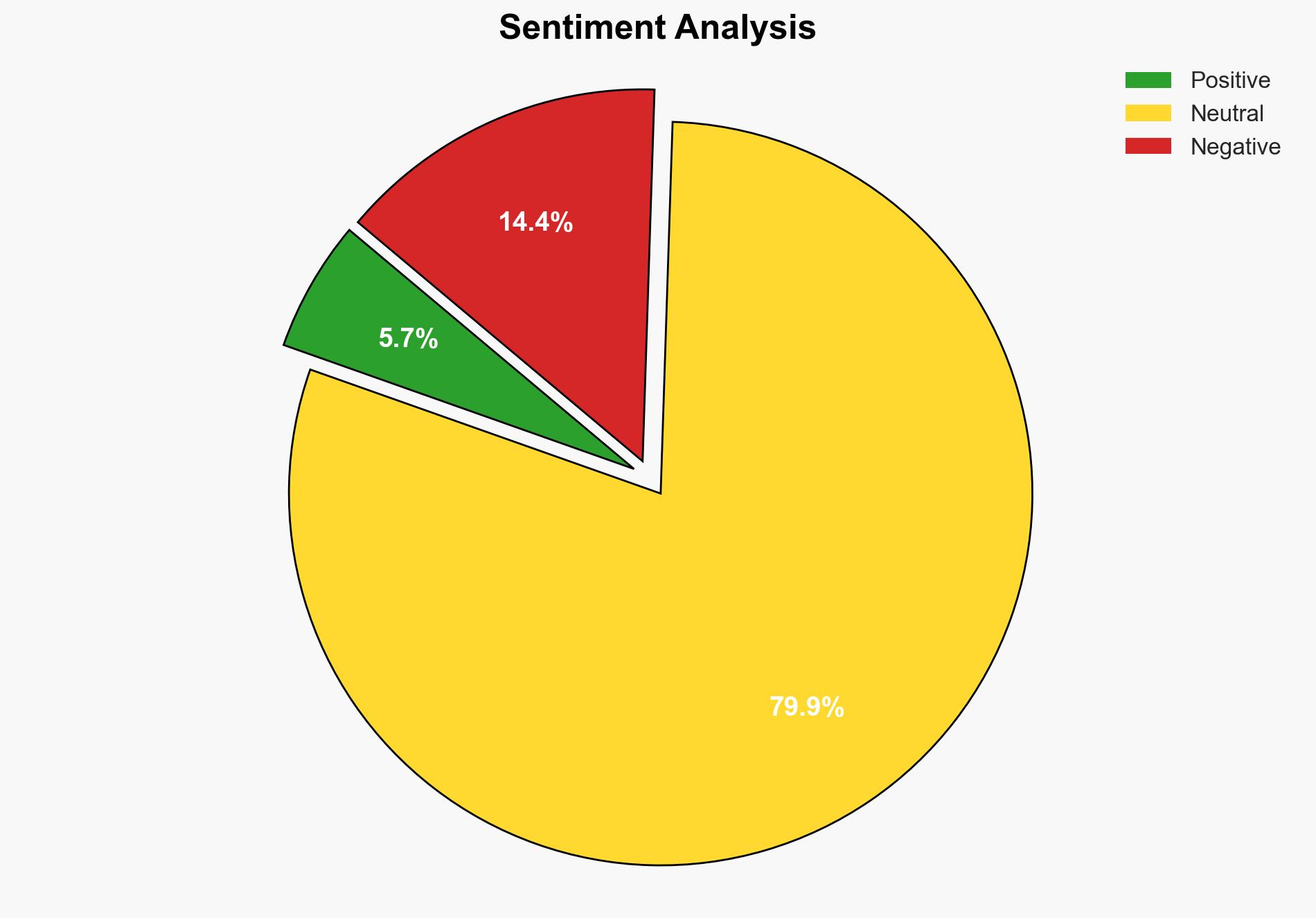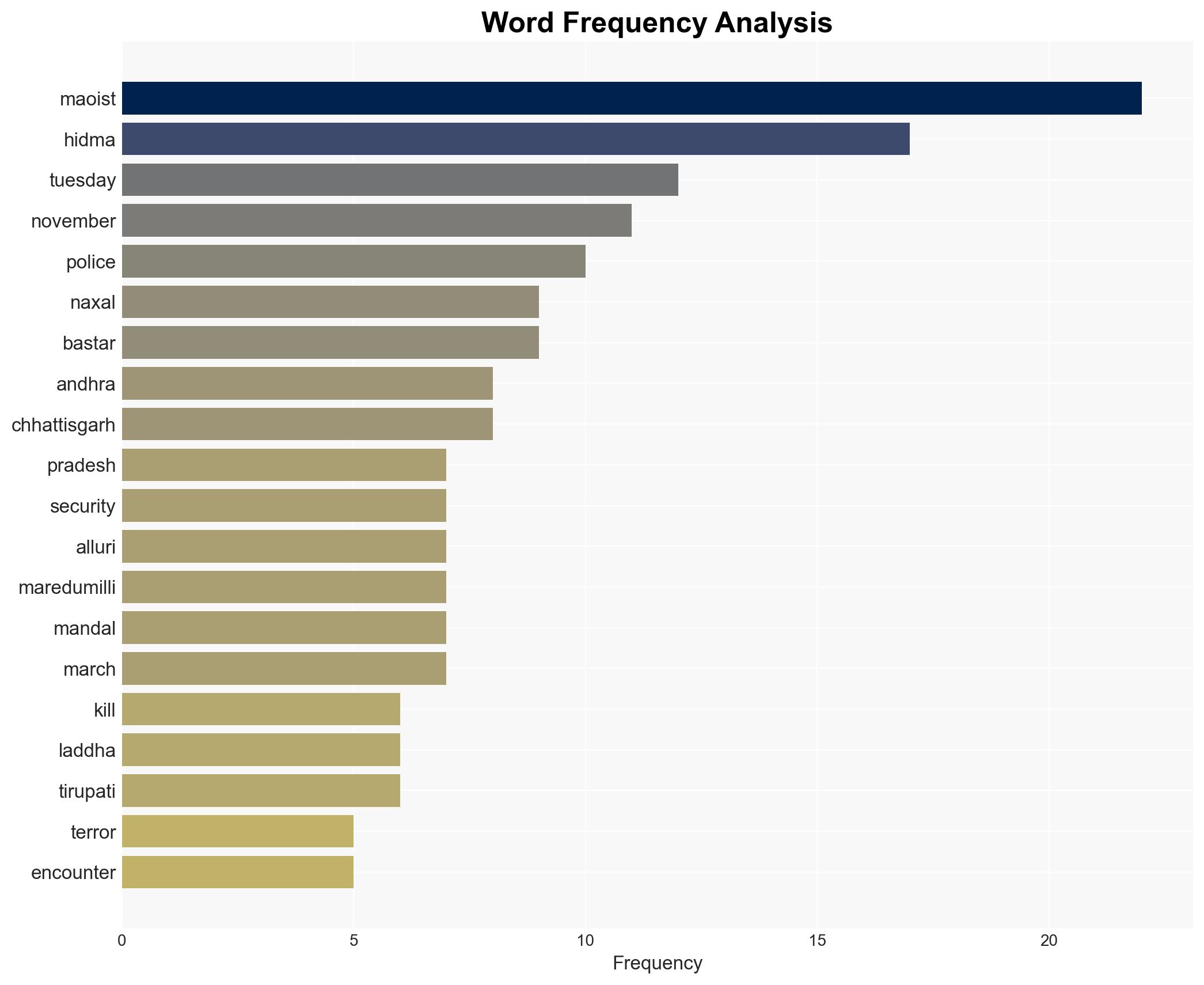Death of Indias most feared insurgent leader- top Naxal commander Madvi Hidma killed in an encounter in AP – BusinessLine
Published on: 2025-11-18
AI-powered OSINT brief from verified open sources. Automated NLP signal extraction with human verification. See our Methodology and Why WorldWideWatchers.
Intelligence Report: Death of India’s Most Feared Insurgent Leader – Madvi Hidma
1. BLUF (Bottom Line Up Front)
The death of Madvi Hidma, a top Naxal commander, represents a significant operational success for Indian security forces. The most supported hypothesis is that his death will temporarily disrupt Naxal operations but is unlikely to dismantle the insurgency entirely. Confidence Level: Moderate. Recommended action includes intensifying intelligence operations to prevent the reorganization of Naxal forces and leveraging this success to weaken remaining leadership.
2. Competing Hypotheses
Hypothesis 1: The death of Madvi Hidma will lead to a significant decline in Naxal operations due to the loss of a key leader and strategist.
Hypothesis 2: The death of Madvi Hidma will have limited impact on Naxal operations as the group is likely to have contingency plans and other leaders ready to assume command.
Hypothesis 2 is more likely due to the historical resilience of the Naxal movement and the presence of other leaders within the organization who can step up to fill the vacuum left by Hidma’s death.
3. Key Assumptions and Red Flags
Assumptions: The Naxal movement is highly decentralized, allowing it to withstand the loss of individual leaders. The Indian security forces have accurate intelligence on the Naxal leadership structure.
Red Flags: Potential misinformation regarding the death of Hidma, as insurgent groups may use deception to mislead security forces. Over-reliance on the assumption that leadership decapitation will lead to insurgency collapse.
4. Implications and Strategic Risks
The immediate implication is a potential temporary disruption in Naxal operations. However, strategic risks include the possibility of retaliatory attacks by Naxal factions seeking to demonstrate continued capability. Politically, the Indian government may face pressure to capitalize on this success by further intensifying counter-insurgency efforts. There is also a risk of misinformation campaigns by Naxal sympathizers to undermine the perceived success of the operation.
5. Recommendations and Outlook
- Enhance intelligence operations to identify and monitor emerging Naxal leaders.
- Strengthen community engagement in affected areas to prevent Naxal recruitment.
- Best-case scenario: The Naxal movement weakens significantly, leading to reduced violence.
- Worst-case scenario: Retaliatory attacks increase, leading to heightened instability.
- Most-likely scenario: Temporary disruption with eventual reorganization of Naxal operations.
6. Key Individuals and Entities
Madvi Hidma, Madakam Raje, Deve Lakmal, Chaitu Malla, Kamlu Kamlesh, Thippiri Tirupati (alias Devuji), Keshava Rao (alias Basavaraju), Amit Bardar, Mahesh Chandra Laddha.
7. Thematic Tags
Structured Analytic Techniques Applied
- ACH 2.0: Reconstruct likely threat actor intentions via hypothesis testing and structured refutation.
- Indicators Development: Track radicalization signals and propaganda patterns to anticipate operational planning.
- Narrative Pattern Analysis: Analyze spread/adaptation of ideological narratives for recruitment/incitement signals.
- Network Influence Mapping: Map influence relationships to assess actor impact.
Explore more:
Counter-Terrorism Briefs ·
Daily Summary ·
Support us





